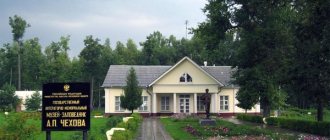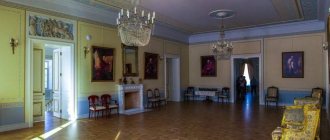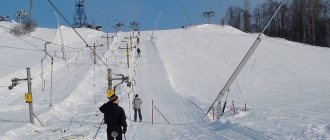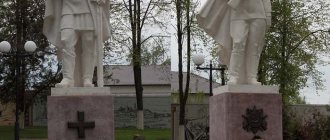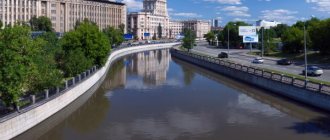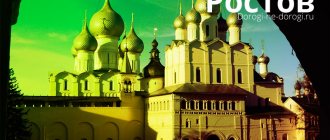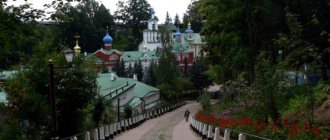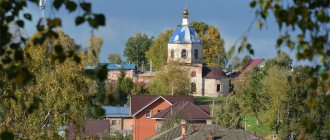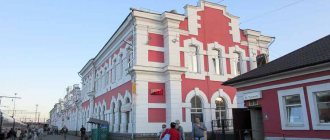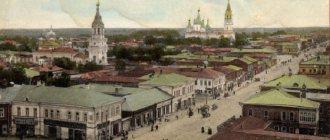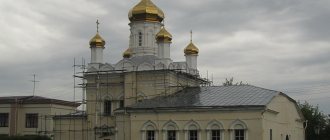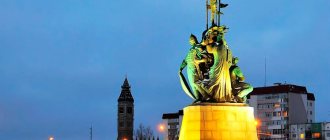Borovsk is a historical city in Russia, which is little explored by tourists. In its extraordinary landscapes and seemingly inconspicuous streets, the city preserves amazing architectural monuments, unique frescoes and the little-studied culture of the Old Believers. The mystery and deep history of Borovsk captivates and will not leave any visitor to this city indifferent.
The centuries-old history of Borovsk is simply fascinating. The exact designation of when the city was founded is still not known for certain, but ceramics were found , which dates back to the 11th - 13th centuries. The first mention of the city dates back to 1358. Surprisingly, Borovsk has managed to preserve not only its historical layout, but also its rich cultural heritage to this day. Thanks to this, he never tires of inspiring many artists and poets to create creative masterpieces.
Description and history of Borovsk
Borovsk is one of the oldest cities in Rus', which amazes with the number of attractions that have been preserved since the founding of the city.
It is located along the Protva River. Borovsk is the northernmost city of the Kaluga region, it is located 85 km from the southwestern region of Moscow, and 106 km from the regional center of Kaluga. The local population for 2021 was 10,734 people. The city abounds in coniferous trees and is surrounded on all sides by pine forests, which is why it is named “Borovsk”. The official founding date is considered to be 1358. This year Borovsk was mentioned in the chronicle of the prince, Ivan 2 Ivanovich the Red (Merciful), son of Ivan 1 Danilovich Kalita.
But there are 3 facts that cast doubt on the conclusion of historians:
- One of the ancient chronicles indicates the date of construction of the Church of the Intercession in Vysokoye Selo in 1146. At the same time, the baptism of the Slavs took place on the Protva River, and the Borovets (Borovsk) fortress was erected in the bend of the river.
- On the territory of Borovsk, during excavations, household items and ceramics were discovered dating back to an earlier period, the 11th – 13th centuries.
- The chronicle of Grand Duke Vasily Dmitrievich from 1390 speaks of the city of Borovsk as a fully formed appanage principality with an established internal order.
Historical events in Borovsk:
| 1378 | By decree of Prince Dmitry of Moscow, the city was transferred to Prince Vladimir of Serpukhov. |
| 1380 | Vladimir (Serpukhov-Borovsk prince) during the Tatar-Mongol attack sided with Prince Dmitry and played an important role in the Battle of Kulikovo. |
| 1480 | During the period of the “Great Standing on the Ugra” (the confrontation between Prince Ivan 3 of Moscow and Khan of the Great Horde Akhmat), Borovsk served as a defensive point on the southwestern borders of Moscow. |
| 1508 | During the Russian-Lithuanian War, Borovsk was transferred to the military leader and statesman Prince Mikhail Glinsky. |
| 1566 | Borovsk was transferred by Ivan the Terrible to Vladimir Staritsky. |
| 1600 – 1618 | In the "Time of Troubles", especially 1606 -1607. During the peasant war, Borovsk was severely destroyed. |
| 1634 | During a strong fire, the fortress was destroyed, which is why Borovsk lost its status as a defensive point and began to develop in trade. |
| 1666 | As a result of a split in the church, the sisters, noblewoman M.F. Morozova and princess E.P. Urusova, were exiled here. |
| 1777 | Approval of the city coat of arms of Borovsk. |
| 1812 | The city was ravaged and burned by Napoleon's retreating army. |
| 1860 | The famous thinker N. F. Fedorov lived and taught history in Borovsk. |
| 1880 – 1892 | The founder of astronautics, K. E. Tsiolkovsky, lived and taught mathematics in the city. His scientific works were written during the same period. |
| 1941 | The city was captured by the Nazis, its occupation lasted until January 4, 1942. |
Helpful information
| Pizzeria “Peacock” The pizza (15 different types) is deliciously prepared. There is also a regular menu, but not very varied. | N55.21139 E36.49564 |
| Cafe "Izba" Good cafe. The view from the observation deck is amazing. An interesting interior, although oversaturated with details. The waitress is dressed in a Russian sundress. Unobtrusive music. The food is ok, the menu is rather poor. Prices are high for the province. | N55.20591 E36.48727 |
| Cafe "Victoria" | N55.19093 E36.47379 |
| Boarding house "Fateevo" The holiday house has two three-story brick buildings and a new three-story "Euro-cottage". Euro-cottage (three-story, new, with two isolated blocks on each floor (in each block there is a set of dishes, an electric kettle), with independent entrances (if desired, the internal doors open and the cottage is transformed into a single space for use by one company): To yours services: bar, disco, billiards, table tennis, Russian bath and sauna, karaoke, fishing, skiing, skating and sledding, sports grounds (football, volleyball, basketball), barbecue area, rental (TVs, refrigerators, horses and ponies, sports equipment), free guarded parking, excursions... | N55.17001 E36.53083 |
| Cafe "Portal" They cook to order, so you may have to wait a long time. | N55.20667 E36.48316 |
| Cafe "Druzhba" A large assortment of dishes, quite quickly and inexpensively. Fresh bakery. | N55.20835 E36.48492 |
| Guest House An excellent and inexpensive hotel with excellent service. A unique offer in this town in terms of service and quality. All conditions have been created for holding business and romantic meetings at the Gostiny Dom in Borovsk hotel. | N55.20341 E36.46669 |
| Borovsk bus station There is no waiting room at the bus station, there are not many flights either: Balabanovo (every 20 minutes) and Obninsk (6 buses per day, minibuses every hour). | N55.20719 E36.48217 |
| Balabanovo bus station The bus station is located at the railway station and does not have a separate room. | N55.17877 E36.66156 |
| Balabanovo railway station Suburban electric trains to Moscow from Kaluga and Maloyaroslavets. Passenger trains do not stop here. There is a buffet at the station. | N55.17838 E36.66260 |
| Cafe "Asenyevskoye" A cafeteria-class establishment, but there are no complaints about the quality of food. Open all day. | |
| Cafe-bar "Borovsk" Banquet-type cafe at the hotel | N55.20606 E36.48372 |
| Mini-hotel "Borovsk" Seven rooms (2-5 beds), amenities in the hallway. On weekends it can be noisy due to the disco and the cafe located on the ground floor. | N55.20612 E36.48369 |
Top 10 most interesting sights of Borovsk
Borovsk, whose sights are distinguished by their primitiveness and uniqueness, was included in the list of historical cities of Russia in 2000.
List of attractions:
- St. Pafnutev Borovsky Monastery. The monastery was founded by Saint Paphnutius, in worldly life Parthenius, who took monastic vows at the Vysoko-Pokrovsky Monastery in 1414. In 1444, Paphnutius and his disciple left the walls of the Intercession Monastery in search of solitude, but a string of like-minded people followed them. This is how a men’s monastery was formed called the Pafnutiev Monastery of the Nativity of the Blessed Virgin Mary. With donations from the clergy, the hermits built churches and temples. In the spring of 1477, the Monk Paphnutius died, he was canonized “as a saint,” and was buried near the main church of the monastery.
- Frescoes of Borovsk. A distinctive feature of Borovsk is the frescoes on the facades of ancient houses and fences. At the beginning of the 21st century, the artist, local historian and public figure V. A. Ovchinnikov moved from Moscow to Borovsk with his wife, poetess Elvira Chastikova. At some point, the artist decided to paint the dull walls of buildings, and his wife accompanied each drawing with a poem specially written for this illustration.
- Church of the Intercession of the Blessed Virgin Mary. The temple (or “Borovsk Kizhi”) is inextricably linked with the history of Paphnutius and the emergence of the Holy Paphnutian Monastery. It was in this temple that the Borovsk wonderworker Paphnutius served for 30 years (from 1414 to 1444). The Church of the Intercession of the Holy Virgin is made of wood without a single nail, but despite this, it has been perfectly preserved to this day, although usually such buildings require restoration after 200 years.
- Cathedral of the Annunciation of the Blessed Virgin Mary. The cathedral is located near the central square of the city on a hill above the Protva River. This is one of the oldest temples built of stone. The date of foundation of the cathedral is unknown for certain, but in ancient times the cathedral was made of wood. The cathedral is an important landmark of the city and is called the “Cathedral of the Kaluga-Borovsk diocese.”
- Temple of Boris and Gleb. 1 mention in the records of the “temple of Boris and Gleb” appeared in 1610. It was described that the wooden church burned out during a fire, and in 1621 it was restored. On the site of the wooden temple, a stone one was erected in 1704. The erected temple, erected in honor of the holy noble princes Boris and Gleb, is recognized as a monument of federal significance.
- Cathedral of the Intercession of the Blessed Virgin Mary. The official founding date of the church dates back to 1912. The Revolution of 17 did not make it possible to complete the interior decoration, and the cathedral was abandoned. In the 30s, due to its large area, the cathedral was used as a car garage and warehouses. Until the beginning of the 21st century, it was part of the Borovsk vehicle fleet. In the fall of 2005, it was decided to transfer the cathedral building to the Old Believers to house a nunnery there.
- Temple of Dmitry of Thessalonica. The Church of the Great Martyr Demetrius of Thessalonica is located in the village of Ryabushka, Borovsky district. It was built in 1804 from stone. In the hall there are wooden statues of the “Mother of God” and “Mary Magdalene”, and an image of the Great Martyr Demetrius hangs. Near the temple there are 2 consecrated springs, to which people from all over the area flock at Epiphany.
- Monument to K. E. Tsiolkovsky. The monument to Tsiolkovsky was erected in 2007 on the main street of the city to mark the 150th anniversary of the scientist. The bronze composition by S. Bychkov weighs 600 kg and consists of a sculpture of Tsiolkovsky looking up and a rocket taking off nearby. Before Bychkov’s composition, a bust of the scientist was located here.
- Monument to Admiral D.N. Senyavin. In 2013, in the park on the street. Lenin erected a monument to the Russian military leader, the legendary Admiral D.N. Sinyavin. He commanded the Baltic Fleet, was a participant in the Russian-Turkish War, opposed Bonaparte and became the winner of the Battle of Athos. He was born in the village of Komleve in the Borovsky district into a family of hereditary military men.
- Monument to St. Paphnutius. In 2021, a monument to the wonderworker and founder of the St. Paphnutius Monastery Paphnutius Borovsky was erected near the Church of the Most Holy Theotokos. It is made of bronze by sculptor Alexei Leonov. In the future, the monument will be placed on a pedestal and a chapel will be built nearby.
Independent acquaintance with historical Kaluga in a few days
If you find yourself passing through Kaluga or taking one day to get acquainted with the city’s attractions, you can see a lot of interesting and unusual things.
For example, arrange a sightseeing tour of the central part: State Museum of Cosmonautics - St. George's Cathedral - Chamber of the Korobov Merchants - Kaluga Regional Museum of Local Lore - Stone Bridge - Holy Trinity Cathedral - Church of the Intercession of the Blessed Virgin Mary - Gostiny Dvor - Kaluga Regional Art Museum. This tourist route will allow you to see the main attractions.
Temple of John the Baptist
Having a few days left, it is recommended to devote one of them to a more detailed study of the “cosmic” attractions for which Kaluga is famous. In addition to the cosmonautics museum, it is worth visiting the planetarium, the house-museum of K. E. Tsiolkovsky, and going to the Mira park and square of the same name, where the famous monument to the great scientist is installed.
Architectural objects and monuments of Borovsk
A huge number of interesting architectural and historical objects have been preserved in Borovsk.
Chapel of Boyarina Morozova
The chapel, erected in memory of Feodosia Morozova and her sister Evdokia Urusova, is located on the site of the ancient Settlement, on the street. Soviet. This is the tragic story of 2 sisters who were martyred during the schism of the church in the mid-17th century.
In 1905, after the adoption of freedom of religion, a procession of the cross came to the graves of the sisters, as if they were visiting the holy great martyrs. At the beginning of the 21st century, at a meeting of Old Believers of the Orthodox Church, they decided to erect a chapel dedicated to 2 sisters.
Officers' meeting in a merchant estate
An ancient merchant estate, built in the 19th - 20th centuries, is located in Borovsk on the street. Lenin. Along the street is the main estate, which previously belonged to the ancient merchant family of the Sanins. The estate consists of a courtyard area and a garden.
At the beginning of the 20th century, the estate was purchased by an officers' meeting. During his stay in Borovsk, the Emperor Grand Duke Mikhail Alexandrovich, the brother of Emperor Nicholas II, honored the estate with a visit.
Shokin Estate
Shokin’s estate or “lace house” is the most beautiful building in Borovsk, which since 1987 has the status of a cultural heritage site of regional significance. It was built at the end of the 19th century and is located on the street. Lenin.
Borovsk has historical sights such as the Shokin estate.
The building is 2-storey with turrets on the roof, the 1st floor is made of solid stone, the 2nd floor is wooden and decorated with openwork carvings. The merchant Shokin, who built the estate, was a respected man, a builder of churches and a member of the Borovsk City Duma.
Historical monuments of Borovsk
Borovsk, whose attractions, ancient houses and estates with an interesting history, arouse great interest among tourists.
House of merchant Bolshakov
The 3-story stone building of the early 18th century was considered the richest building of that time. The attraction is under state protection. According to records, this house-museum belonged to the Bolshakov-Pisarev merchant dynasty.
At various times, Emperor Napoleon, Grand Duke Alexander Nikolaevich, Emperor Alexander 1, Prince Mikhail Alexandrovich stayed in the house.
Merenkov merchant house
The house of the merchant Merenkov was built at the end of the 19th century. This is a 2-storey house, the 1st floor is stone, the 2nd is wooden. Thanks to the ornaments that decorated the facade, the house became a historically significant object, but recently, due to the lack of reconstruction and repair, the house has become dilapidated, and there is an opinion that the building may be demolished.
The decoration and communications in the house at the beginning of the 20th century were considered super-modern; the house had electricity and sewerage. The building currently houses a police station.
Merchant estate of the Sanins
The estate was built in the 19th century by city activists the Sanins. The 2-storey manor consists of a stone 1st floor and a wooden 2nd floor. Currently, the outbuilding, barn and main house have been preserved. Now the estate has been turned into an apartment building and since 1991 it has been included in the list of objects that have the characteristics of a cultural heritage site.
Education
Municipal educational institution "Secondary school No. 1 of Borovsk"
Borovsk, st. Lenina, 26 Phone: 8 (48438) 4-32-26, 4-39-15, 6-63-61
Municipal educational institution "Secondary school No. 2 of Borovsk"
Borovsk, st. Lenina, 47 Phone: 8 (48438) 4-39-58
Municipal educational institution "Evening (shift) secondary school"
Borovsk, st. Kommunisticheskaya, 3 Phone: 8 (48438) 4-39-49
Municipal educational institution "Secondary general education noospheric school"
Borovsk, st. Bolshaya, 38 Phone: 8 (48438) 4-35-32
Municipal educational institution "Secondary school No. 4, Borovsk-1"
Borovsk-1 Phone: 8 (48438) 4-41-78
MDOU "Kindergarten No. 3 "Ryabinka"
Borovsk, st. Kommunisticheskaya, 69 Phone: 8 (48438) 4-41-24, 6-63-51
MDOU "Kindergarten No. 4 "Brigantine"
Borovsk, st. Mira, 62a Phone: 8 (48438) 4-18-90, 4-42-68
MDOU "Kindergarten No. 5 "Yablonka"
Borovsk, st. Kommunisticheskaya, 15a Phone: 8 (48438) 4-42-27
MDOU "Kindergarten No. 8 "Caramel"
Borovsk, st. P. Shuvalova, 18 Phone: 8 (48438) 6-63-60
MDOU "Kindergarten No. 16 "Topolek"
Borovsk, Institute village Telephone: 8 (48438) 6-62-67, 6-61-80
Interesting museums in Borovsk
You can get acquainted with the sights of the ancient city of Borovsk by examining the exhibits of local museums.
Borovsk Museum of History and Local Lore
The museum was founded on July 1, 1987. The main exhibitions are dedicated to the history and culture of Borovsk. The museum contains a collection of household items, ancient photographs of the city, and a numismatic collection of the 16th-20th centuries. The history of the creation of religious temples and cathedrals.
A separate exposition of the Second World War on the territory of Borovsk.
The museum's library contains more than 8 thousand copies of ancient books and chronicles. Collected exhibits related to famous people living in Borovsk over the years.
Museum-apartment of K. E. Tsiolkovsky
From the beginning of April 1887 to November 1888 at the address st. Kruglaya (Tsiolkovsky St.) in house 49, on the 2nd floor of the house lived the founder of astronautics, the famous inventor K. E. Tsiolkovsky. Initially, the museum was founded in the 60s on a voluntary basis, existed for several years and closed.
In the 80s they decided to recreate the museum. On September 19, 1997, the 2nd floor of the house that Tsiolkovsky occupied was restored and now welcomes guests with exhibits of the scientist’s life and everyday life. In total, Tsiolkovsky lived in Borovsk for 12 years.
Museum and Exhibition Center
The art gallery of the museum and exhibition center was created at the end of the 20th century with the participation of artists Mironov and Soldatenkov. The museum is located in a historically significant site, the Church of All Saints. Along with painting exhibitions, the museum can see works of folk art and photo exhibitions.
House-Museum of the Polezhaevs
The building was built at the beginning of the 19th century by the manufacturer Polezhaev, who in 1887 founded a weaving factory called “P. M. Polezhaev and K.” The factory specialized in the production of scarves, which were sold far beyond Borovsk. After the revolution, the factory received the name “Red October”; in the 90s, the factory was renamed “Runo” and continues to operate to this day.
The descendants of the manufacturer set up a museum of their ancestors in the house, which presents:
- personal belongings;
- photos;
- letters;
- furniture;
- household utensils;
- embroidery.
In total, the museum has 1,500 thousand exhibits.
Malinovsky Skete
Malinovsky Skete was built at the beginning of the 18th century. As you know, it was built by ordinary Russian artisans who gathered in the vicinity of modern Bor, hiding from church reform.
Regarding the name of the building, there are two versions in this situation:
- The name is associated with the huge number of raspberries that previously grew near the building.
- The name comes from the famous "crimson" ringing of the bells.
In the old days, the ministers of the Malinovsky Skete were constantly in conflict with the state and the official church, since all the rituals that were performed there were considered outdated.
Private individuals helped the temple survive the difficult period, for example, the merchant Pyotr Bugrov, who constantly visited the temple and invested huge amounts of money in its development. After his death, Bugrov and his wife were buried on the territory of the temple. In the 20th century, Bugrov’s son financed the construction of several similar temples, which became a shelter for many homeless people.
Temples and cathedrals of Borovsk
Borovsk is famous for its ancient Orthodox Old Believer churches and cathedrals.
Old Believer Church of All Saints
The church was founded at the end of the 19th century, construction continued until 1909. The church is located on Lenin Street, built of brick, with a high bell tower and domes. In 1928, the church ceased to function as an Old Believer temple. In the 70s, the façade of the church was restored.
Currently, the temple is used as an art gallery of Borovsk and a cultural center.
Church of the Exaltation of the Holy Cross
The first mention of the Temple appeared in chronicles in 1650. The wooden temple at that time was built at the intersection of Volodarsky and Mira streets. For a long time, no services were held in the Temple due to the absence of a priest, and the abandoned temple fell into disrepair over time.
In 1812 it was looted and burned by Napoleon's army.
A brick church was erected next to the wooden church, but during the bombing of the Second World War it was damaged and was not used for its intended purpose for a long time. In the early 90s of the 20th century, the artist L. G. Kiseleva began restoration work, which continues to this day.
Church of the Transfiguration of the Lord on Vzgorye
In the center of Borovsk, on the square, there is a temple “on Vzgorye”. This is a brick building with 1 bell tower, built of brick at the beginning of the 19th century by the merchant V.S. Prosvirin. In the 20s of the 20th century, the temple was closed and used as a warehouse.
In the 80s of the 20th century, the temple was restored and transferred to the diocese. In 2001, the temple was annexed to the Annunciation Cathedral, and in 2007 it was transferred to the Pafnutiev Monastery.
Church of the Entry of the Blessed Virgin Mary
The temple was erected on the outskirts of Borovsk in 1908 and named Pokrovsky. In 1915, a bell tower was built on the temple. At the beginning of the war it ceased to function; German militias used it as a prison for captured soldiers.
In the post-war period, grain and vegetables were stored in the temple. In the early 90s, it was transferred to the Borovsk Old Believer community and its reconstruction began, which continues to this day.
Registered Old Believer Cemetery
At the turn of the 19th and 20th centuries, Borovsk was a fairly prosperous and rich city. A large proportion of the urban population were Old Believers, among whom a large number of adherents were wealthy people.
Many of the famous townspeople now rest in the Zapisnoye Old Believer Cemetery. Until 1905, the Old Believers were actively oppressed by the Orthodox Church, so until this year there was no official documentation regarding the people buried there.
In 1992, a topographic survey showed that there were up to 1,514 graves in the cemetery, of which 394 graves dated back to the late 19th – early 20th centuries.
Location: Moskovskaya street.
Parks and gardens of Borovsk
Borovsk is located in a very picturesque place, the city has many trees and green park areas.
City square
In Borovsk, on Sovetskaya Street at the foot of the Settlement, there is a small green square with a fountain.
It is equipped with gazebos and benches, flowers are planted and a monument to Yu. A. Gagarin is installed in the center.
Park area
In the center of the village of Krivskoye, Borovsky district, a park area was opened in 2021. The large area is equipped with benches and trees and shrubs are planted. For children's recreation and entertainment, a separate area for cycling and roller skating was fenced off and paved.
Park and garden of the Pafnutev-Borovsky Monastery
On the right bank of the Isterma River, northwest of the monastic buildings, there is the park and garden of the Pafnutiev Monastery. The main attraction of the garden is a cascade of 3 ponds separated by small dams. Pine and linden trees grow along the coastline. The park has been awarded the status of a “Nature Monument”.
Social Services
Department of Social Protection of the Population
Borovsk, st. Sovetskaya, 5 Phone: 8 (48438) 4-32-43 (manager)
Center for Social Services for Elderly and Disabled Citizens
Borovsk, st. Lenina, 22 Phone: 8 (48438) 4-16-01, 4-27-61, 4-25-61
Center for social assistance to families and children "Harmony"
Borovsk, st. Sovetskaya, 6 Phone: 8 (48438) 4-42-15, 6-62-69
State Institution "Employment Center of the Borovsky District"
Borovsk, st. Lenina, 74a Phone: 8 (48438) 4-30-49, 4-26-81, 4-30-59
Modern objects interesting to visit
Borovsk, whose attractions consist not only of ancient temples and cathedrals, bears the honorary title “City of Military Valor”.
Stele "City of Military Glory"
In honor of the city of Borovsk being awarded this title, a stele was unveiled in 2021. The city received the title for courage and dedication during the war on the territory of Borovsk.
The location of the stele was chosen by a majority vote of local residents. The stele was installed at the entrance to the regional center.
Memorial stone to the heroes of the Battle of Kulikovo
The sculpture was installed on the steep bank of the Protva River in 2011 by a local resident of Borovsk, Boyko Alexander. The sculpture is a huge irregularly shaped stone with a sign indicating the date of the Battle of Kulikovo and describing this event. The monument is dedicated to Prince Mikhail the Brave, Mikhail Brenka and the Borovsk residents, who showed themselves to be brave and loyal warriors.
Monument to Yuri Gagarin
The monument to Yu. A. Gagarin in Borovsk was erected in 2011. The bust of 1 cosmonaut is made of bronze and installed on Kommunisticheskaya Street. The sculptor shows Gagarin looking with interest from the ship's porthole at the receding earth.
Monument to N.F. Fedorov
The monument was erected in 2009 in memory of the great thinker and philosopher who worked and lived in Borovsk at the end of his life.
The monument was erected at the expense of the charitable organization “Dialogue of Cultures - One World” for the 180th anniversary of Fedorov, according to a sketch by the sculptor A. Vlasov, made from a portrait of the artist L. Pasternak.
Excursion routes
Excursion with lunch in merchant's style costing 2200 rubles:
- excursion around Borovsk, viewing frescoes on the facades of buildings;
- chapel of noblewoman Morozova;
- house - Tsiolkovsky museum;
- visit to the estate of the manufacturer Polezhaev;
- Pafnutev Monastery and Park;
- lunch in the fresh air on the observation deck of Borovsk.
Excursion costing 1500 rubles:
- walking tour through the center of Borovsk, getting to know its architecture;
- trip to the Vysoko-Pokrovsky Monastery;
- Church of the Intercession of the Blessed Virgin Mary;
- visit to the observation deck and holy spring;
- trip to the Pafnutev Monastery.
A trip out of town to the Kaluga region
The undisputed leader among attractions in the vicinity of the city in the Kaluga region is the ancient Avchurino castle. Although it is forbidden to go inside, every tourist can observe the incredible power of the ancient building from the outside. So it’s worth going there with your family by car on the weekend, after studying the map and description of the attraction.
It is also recommended to go on an excursion to the Yachenskoye Reservoir on your own, where you can get acquainted with the “mysterious” place that attracts lightning, or simply enjoy the local natural beauty.
Top 5 places suitable for holidays with children
In 2021, the city of Borovsk entered the top 5 small Russian cities most popular for holidays with children.
Ethnoworld
The recreation and entertainment park or Ethnographic Park is a museum located near the city and is considered its main attraction. The ethnoworld united Russian, Ukrainian, Kyrgyz, and Belarusian culture and way of life.
The exhibits include workshops and bakeries. In the park you can ride dog and horse sleds. Children are told about making colorful jewelry and household items.
Gremyachiy Brook
Near Borovsk you can see the confluence of the Protva River with a small mountain river. At the confluence of the rivers, a picturesque waterfall formed, consisting of numerous steps. Throughout the area there is the sound of rushing water. The waterfall is surrounded by a beautiful forest.
Borovsk Puppet Theater
A puppet musical theater by Ivan Zatoka opened next to Ethnomir. The main characters of the theater are unique in that they can move to their full height. Thanks to movable joints, the dolls make natural movements with their arms and legs and can pick up small objects.
Shopping and entertainment complex "Borovsk"
The entertainment complex "Borovsk" is located on the street. Lenina 44. In the complex you can visit a cafe. For young children there are entertainment rooms with slides, labyrinths and ball pits. Master classes are held on making crafts from a variety of materials. For older children, there are stimulating games and a climbing wall.
Cinema
One of children's favorite pastimes is going to the cinema.
Cinema "Rodina" in Borovsk is located at st. Lenina 9 and offers viewing of presented films in 2D and 3D format.
Self-guided walking route
Route:
- You can start a walking tour of the city of Borovsk in the central part from the antique store on Lenin Square.
- Next, moving towards the panoramic square, see the monument to military leader Sinyavin.
- Bypassing several buildings you can see the Old Believer church.
- Along the entire route you can admire the painted frescoes on the houses.
- On Kommunisticheskaya Street there is a map of painted frescoes and the main fresco of Borovsk “Globe”.
- Next, a monument to Yu. A. Gagarin was erected.
- Moving along the alley towards the Protva River there is a house with an interesting sign at the entrance that reads “Before you enter, think about whether you are needed here.”
- After viewing the Protva River, returning to the street. You can visit the house of the communists - the Tsiolkovsky Museum.
- Nearby there is an old 2-story house that is more than 100 years old.
- A little further is the city administration and the monument to Tsiolkovsky.
- From the administration, passing behind the houses, you can get to the observation deck, from which you can see the foot bridge across the Protva.
- On the central square of Borovsk “Memorial Alley”, on which the guns are installed, an eternal flame burns and a monument to the soldier is erected.
- At the end of the alley in the central square there is a fountain.
Ethnoworld
Tourists can find the Ethnomir complex outside the city. However, it is precisely this that local residents consider the most important attraction of Borovsk. It is common to come here not only with families, but also with groups of friends. Here anyone can get acquainted with the culture and customs of the peoples living on the territory of the Russian Federation.
In “Ethnomir” you can find Belarusian, Ukrainian and Kyrgyz farmsteads; there are haylofts, bakeries and pottery workshops everywhere.
Within the complex, you can attend various kinds of master classes that teach you how to make jewelry and handicrafts.
Tourists can optionally ride a horse or dog sled, buy various souvenirs and learn useful information about the life of different peoples.
Interesting Facts
List of facts:
- The original name of Borovsk is Borovesk.
- At the end of the 15th and beginning of the 16th centuries, the icon painter Dionysius, a follower of Andrei Rublev, worked in the St. Paphnutievsky Monastery.
- The city layout approved by Catherine II has been preserved to this day.
- Surprisingly, on the same day, October 14, Napoleon’s army and Hitler’s army entered the city of Borovsk, with a difference of 129 years.
The sights of Borovsk are interesting for their colorfulness and historical value. Few cities in Russia have preserved such a large number of ancient temples and cathedrals.
Author: Olga Zhanskaya
Article design: Oleg Lozinsky
